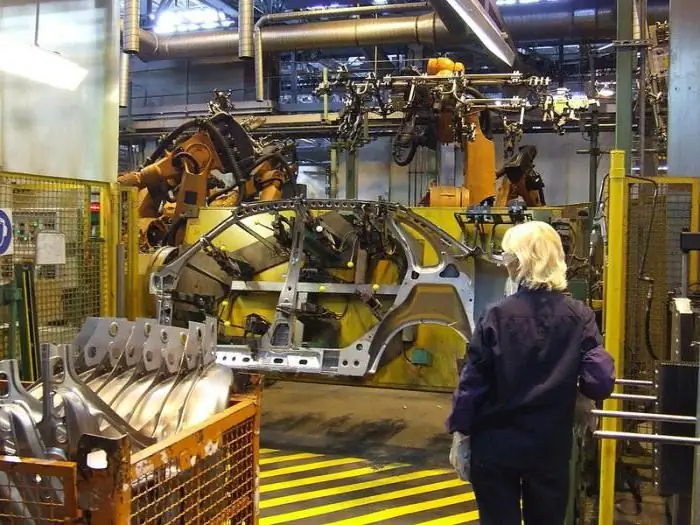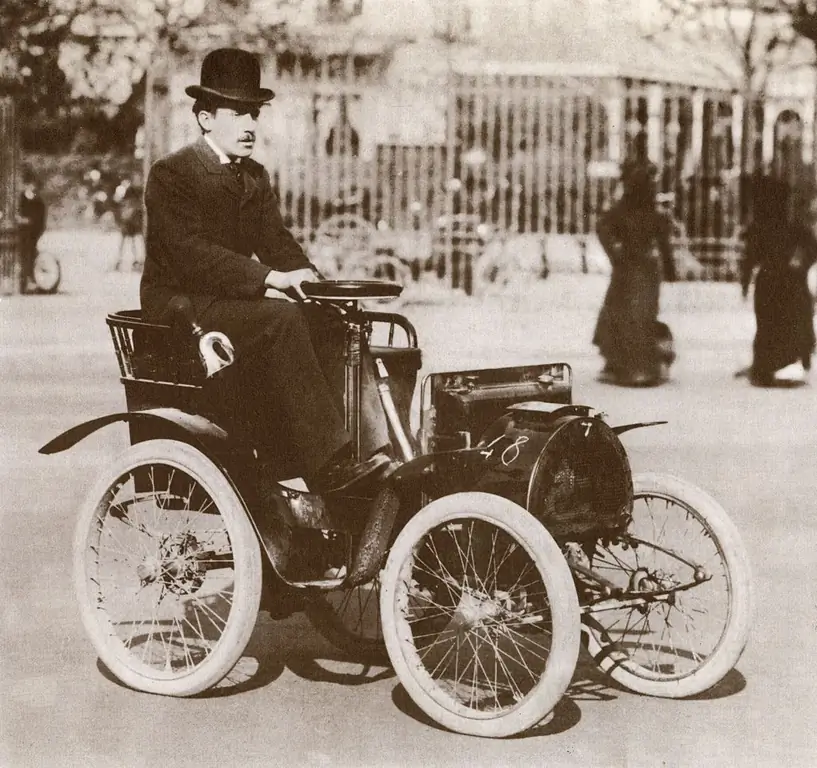2026 Author: Howard Calhoun | [email protected]. Last modified: 2025-01-24 13:10:47
Mankind flew into space in the last century. During this time, space technology has made a powerful breakthrough. But if the astronauts stay on board the orbital stations for a long time, then there is a need for cargo space transportation, and such a cargo flow must be regular. One of the simplest solutions to this problem was the development of special vehicles. On the basis of the Soyuz spacecraft, which is under the control of pilots, scientists have created a cargo space vehicle.
How did the idea of a cargo ship (GC) come about?
The purpose of the organization of cargo traffic is to increase the period of active existence of the orbital station. The capabilities of the Soyuz manned spacecraft in terms of the capacity of the necessary equipment with consumables that were required for life support and the full operation of the station and crew were limited. Therefore, a special Progress spacecraft was developed with the maximum use of the Soyuz spacecraft (SC), which has proven itself well in terms of automatic flight.

Parameters
The importance of building a cargo ship was not even discussed. The question was about what he should be.
Its dimensions, the materials to be used to create it, and the equipment needed for this were discussed. All these questions were very ambiguous, and some remain so to this day. The parameters that the Progress ship was supposed to have had to be adjusted to the requirements of the cargo and the amount of equipment on board. The developers disagreed about the manned and unmanned versions of the ship.
In the first case, the ability to return some materials or equipment to the ground was indicated as the main advantage. In the second option, economy was an advantage: all materials with research results had to be returned with the crew. The economy of the ship was a priority.

Design
The elements of the Progress spacecraft had to be designed in such a way as to create as little noise as possible for antennas, sensors and solar arrays. In addition, outdated equipment needed to be replaced. And it had to be done as soon as possible. The delivery time of goods had to be kept to a minimum, as well as to take into account unforeseen situations. The work of the control system, orientation and corrective installation had to be adjusted so that they ensured the proper level of maneuvering with the orbital station.
According to calculations, the optimal dimensions and weight of a cargo ship"Progress" maximally coincided with the parameters of the spacecraft "Soyuz". This greatly simplified the work, since it became possible to fully use the instruments, assemblies and structural elements of this ship. It was decided that the equipment and materials that will be delivered to the station will be placed in a special compartment for cargo. It is sealed and equipped with a docking unit with a hatch for entering the compartment itself. The on-board systems are located in the instrument part of the ship.

Compartments
In the leaky compartment, which also has a transport ship "Progress", placed pneumohydraulic systems. Thus, the ingress of fuel vapors into the living compartment was excluded. In the event of a compressed gas leak, the pressure inside the sealed compartments should not exceed the norm.
The compartment with the units of the propulsion system and installations was also made leaky: orientation, rendezvous and corrective.

First samples
The designers took into account such moments as the launch weight of the Progress transport vehicle, its maximum dimensions with antennas folded, and the latter should not exceed those in the Soyuz spacecraft. This would make it possible to use a launch vehicle to launch it, which puts spacecraft into orbit.
As a result, the first flight samples were developed. Work on design documentation, diagrams and operational documents was carried out from 1974 to 1976. The preliminary design was completed in February 1974, andthe first flight model was tested in 1977 after its development was completed in February. The first cargo ship was put into orbit on 1978-20-01
Initially, "Progress", a spacecraft for the transport of goods, was created in two copies. The government later ordered 50 more.
During the period from 1978 to 1994 Progress-class cargo ships were repeatedly used for experiments. Among the major studies was the creation and testing of a prototype space radar system for detecting surface and underwater objects, as well as frame large-sized radio antennas, equipment with optics for space communications and reflectors of sunlight from space. On the basis of the GC, the Gamma module, a special automatic astrophysical apparatus, was later created.

Results
Operation experience has shown that the first Progress M and Progress spacecraft were able to constantly provide the orbital stations with the necessary equipment and materials for their long and fruitful work in orbit. Until 1985, they were the only automatic machines.
The cargo ship was created mainly on the basis of the design of the Soyuz spacecraft. Nevertheless, it was distinguished by its qualitative characteristics, so it could solve important tasks that were not available to other devices.
After a lengthy test of on-board and flight systems, modifications of the Progress spacecraft have confirmed their high reliability. As a result, 27 cargo spacecraft completed the mainflight programs.
In addition, the cargo ship has become an effective base for various kinds of research and the creation of target modules of varying complexity.
On the basis of one of the modifications, the development of a new SC "Progress M-2", intended for the international orbital station, was carried out. It became possible to create larger transport cargo ships using other launch vehicles, such as the Zenith.
Moreover, it has become realistic to carry out complex maneuvers, research, and master new waste disposal technologies. And all this thanks to the creation of a multi-purpose automatic cargo ship.
Recommended:
VAZ: history of creation and development. OJSC "AvtoVAZ"

Volga Automobile Plant is known as the largest domestic enterprise in the engineering industry. Many decades of work of the auto giant are rich in ups and downs. VAZ, whose history begins half a century ago, today does not lose its positions. It will be discussed in the article
"Yandex": the history of the company's creation

The history of the creation of "Yandex" is a clear confirmation that the desire to succeed and faith in one's own strength can turn a small search program into a mega-corporation that brings huge income
Spaceship: overcome gravity

Spaceship is perhaps the most significant invention in the history of mankind. This is a real scientific and technological breakthrough, which allowed us to touch the secrets of the Universe and to know the world outside our home planet. Throughout its history, human civilization has had to go through a long and thorny path full of mistakes and failures, the crowning achievement of which was overcoming Earth's gravity and entering near-Earth space
"Renault": manufacturer, history and date of creation, management, country, technical focus, development stages, introduction of modern technologies and car quality

The Renault manufacturer produces high-quality cars that are in demand in many countries of the world. The products were to the taste of Russian motorists. In 2015, the French concern produced the millionth car from the lines of the Russian plant
"Boeing-707" - a passenger aircraft: overview, description, characteristics, history of creation and cabin layout

Today, Boeing Corporation is a trendsetter in the US aviation industry and one of the world's leading aircraft manufacturers. At one time, it was this company that invented the famous Boeing 707 aircraft, thanks to which international air travel gained wide popularity

